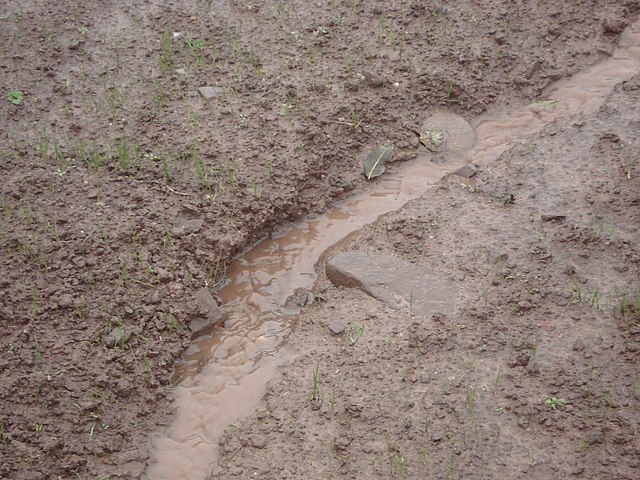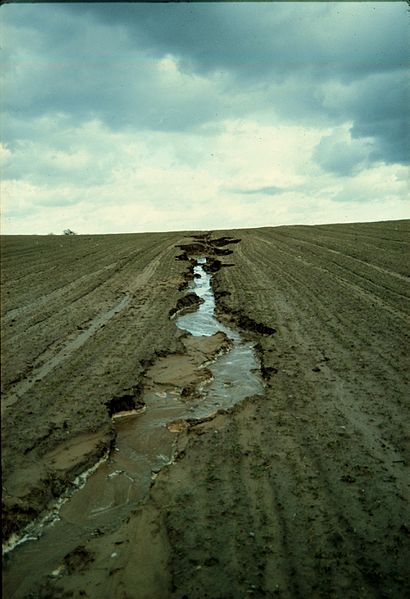In hillslope geomorphology, a rill is a shallow channel cut into soil by the erosive action of flowing surface water. Similar but smaller incised channels are known as microrills; larger incised channels are known as gullies.
A downslope view of part of the eroding rill network from County Tyrone, Northern Ireland. See below for a close-up view of a single rill
Water flowing in an actively-eroding rill on bare farmland in County Tyrone, Northern Ireland
Rill initiation: the finger is pointing at a headcut which has just been incised by runoff which is flowing from right to left
Landscape shaped by rill erosion. Volgograd Oblast, Russia.
Erosion is the action of surface processes that removes soil, rock, or dissolved material from one location on the Earth's crust and then transports it to another location where it is deposited. Erosion is distinct from weathering which involves no movement. Removal of rock or soil as clastic sediment is referred to as physical or mechanical erosion; this contrasts with chemical erosion, where soil or rock material is removed from an area by dissolution. Eroded sediment or solutes may be transported just a few millimetres, or for thousands of kilometres.
An actively eroding rill on an intensively-farmed field in eastern Germany
A natural arch produced by the wind erosion of differentially weathered rock in Jebel Kharaz, Jordan
A wave-like sea cliff produced by coastal erosion, in Jinshitan Coastal National Geopark, Dalian, Liaoning Province, China
Soil and water being splashed by the impact of a single raindrop








